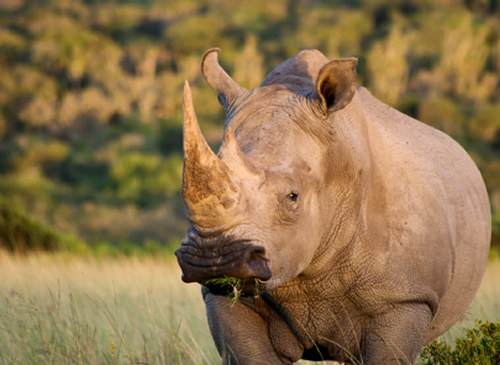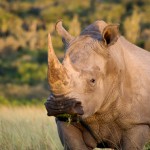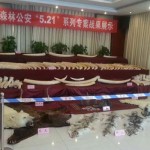by Don Pinnock, courtesy of Conservation Action Trust, South Africa.

Two top international economists say those who advocate trade in rhino horn and ivory fail to understand world markets or the economic muscle of multinational poachers.
Governments, economists and conservationists who think they can curb poaching by selling rhino horn and ivory legally have little understanding of macroeconomics or the sophistication of international crime syndicates. They stand to be out-gunned, out-maneuvered and have no idea about the laws of the market. This is according to economists Alejandro Nadal and Francisco Aguayo in a hard-hitting critique of, particularly, South Africa’s wildlife pro-trade lobby, published this week in the Manchester University.
Mr Nadal, a professor at El Colegio de Mexico and Mr Aguayo, an economic systems analyst at Maastricht University describe attempts to formulate wildlife trade policy on the basis of inadequate command of economic theory as “acts of recklessness”.
One of the most conspicuous features in the economic analysis of wildlife trade, they write, is the level of misinformation about changes in market theory over the last six decades. With regard to proposals by those wishing to lift the Convention on Trade in Endangered Species (Cites) ban on trade in animal parts, “the uncritical use of theoretically discredited analytical instruments is a striking revelation”.
Economic analysis of wildlife trade, according to the study, “appears to have been trapped in the backwaters of textbook economics.”
Most of the reports that support legalising trade in animal parts and which have influenced the South African government are described as “grey literature” by the authors and being more in the tradition of pamphleteering than scientific deliberation.
According to the pro-trade model, scarcity caused by trade bans, produces high prices which leads to higher poaching rates. Instead of combating illegal poaching, according to this argument, scarcity should be eliminated through legal supply from wildlife farmers and state stockpiles. Legalising markets would then reduce or even eliminate profitability for poachers while maintaining high returns for legal suppliers.
This argument, say Prof Nadal and Mr Aguayo, relies on highly unrealistic assumptions, one of which is that legal trade is able to fully substitute for illegal trade. This points to a failure to understand illegal markets. Market legalisation, they suggest, would actually increase demand as well as provide avenues for illegal traders to launder poached products.
The report points to a number of naive and untested assumptions in pro-trade models. One is an that illegal supply of products such as ivory and rhino horn is more costly than a legal supply and can only survive if prices remain high. This is “simply an untested assumption” and also fails to recognise that the relatively small number of legal suppliers would have a powerful incentive to retain a monopoly and not lower costs.
The report also contests the notion that farming can lead to conservation of wildlife. “Farming must be seen for what it is, a for-profit operation that responds to an economic logic that will probably come to dominate all other considerations.” Farming rhino horns may be good for business, but it’s not an answer to poaching or wildlife protection nor wild rhinos.
One of the most serious blind spots in the pro-trade literature, say Prof Nadal and Mr Aguayo, is the absence of reliable quantitative information that could be used to systematically tackle the question of how price reductions could possibly decrease demand. This literature ignores the fact that any business enterprise in a capitalist economy needs to develop its market and therefore invest resources in expanding demand. So a pro-trade position claiming to reduce the predation of wild rhinos and, particularly, elephants would have to explain how it would factor in the market need to increase supply.
Pro-trade studies, says the report, assume that poaching is done by crime syndicates, but fail to understand the international sophistication of what are essentially multi-product firms. “Illegal traders are relatively shielded against competition and can store high value products when they perceive future increases in prices, finding a value in sacrificing present for future sales.”
Crime syndicates involved in wildlife trafficking, says the report, not only operate with multiple species, they also work with many lines of production: illegal logging, drugs, arms and human trafficking. This allows them to hedge against the vagaries of a single market such as rhino horn or ivory and withstand price wars for longer than legal traders could.
“Access to scope economies may thus reveal a competitive advantage for illegal trade channels with respect to wildlife farmers and their hypothetical trading channels. Moreover, high prices and market uncertainty also provide incentives for market manipulation that allow illegal traders to expand their profit margins (because) consumers are willing to accept high prices in response to the threat of even higher prices in the future.”
The sheer size of criminal firms radically alters the rules of the game. Therefore, says the report, it’s reckless to think that an analysis of market-friendly mechanisms has any degree of accuracy when applied to these multi-product firms.
The report warns that even legal markets are no panacea against corruption. For this reason a new wildlife trade authority would have to be formed and empowered to police the process. It would be tasked to attract buyers to the legal trade and away from the black market. It would also need to fine-tune prices to not be too high or low and deal with rogue competitors and old cartel members willing to break ranks. It would be required to increase demand by law-abiding consumers while increasing the perceived costs for illegal consumers. There has been no analysis in pro-trade literature of how this could be done.
The report is particularly scathing about the economic modelling proposed (or simply ignored) by the pro-trade lobby. “The behaviour of wildlife-product suppliers, it says, is seen as an optimising, price-taking, homogeneous group of agents, vertically integrated to produce an undifferentiated product.”
The market, however, is anything but that. “Reducing international wildlife trade to a one-stage market exchange is a reckless simplification. Its main drawback is that it fails to take into account the various stages involved in the supply chain.
“Everything beyond textbook versions of market supply, including neoclassical analysis of asymmetric information, transaction costs, monopolistic competition, or contested markets, is blatantly ignored in (pro-trade) models. Their supply structure is misplaced and most of their claims are restricted to a very small and most likely irrelevant set of possible market configurations.”
Their modeling, it says, “lacks a theory of the basics of industrial dynamics: how firms grow, how industries develop, what determines the boundaries of firms and what the sources of competitive advantages are.”
Although some pro-trade papers present what appears to be an appealing set of empirical observations for the demand of wildlife products, in reality these are “nothing more than a set of isolated annotations of tenuous validity — brutal simplification of real-world economics (and) a serious assault on logic.”
Economic theory, says the report, is something more than textbook economics and research cannot rely on the “well-behaved concepts taught in undergraduate courses”.
Given the recent intensification of poaching, with all its cruel ramifications, say Prof Nadal and Mr Aguayo, enthusiasm for alternative policy instruments is understandable. But using market forces in an attempt to solve the poaching crisis or as a tool in conservation policy is misleading.
The aim of the report is clearly not to suggest ways to solve the poaching crisis, but to explore the consequences of lifting the Cites prohibition on trade in animal parts. For this reason Prof Nadal and Mr Aguayo take to task those who campaign for the lifting of trade bans. To lift the bans, they say, would be a disaster for creatures such as rhinos and elephants in the wild.
“We have shown the serious limitations of pro-trade models and the weaknesses of their conclusions,” says the report. “Recommending legal markets in underfunded and understaffed protected areas and biosphere islands in a sea of rural poverty is irresponsible.
“Economists, as with all scientists, have an ethical responsibility to communicate the limitations of their models and the potential misuses of their research. Thus far, pro-trade economists have failed to discharge this responsibility.”




